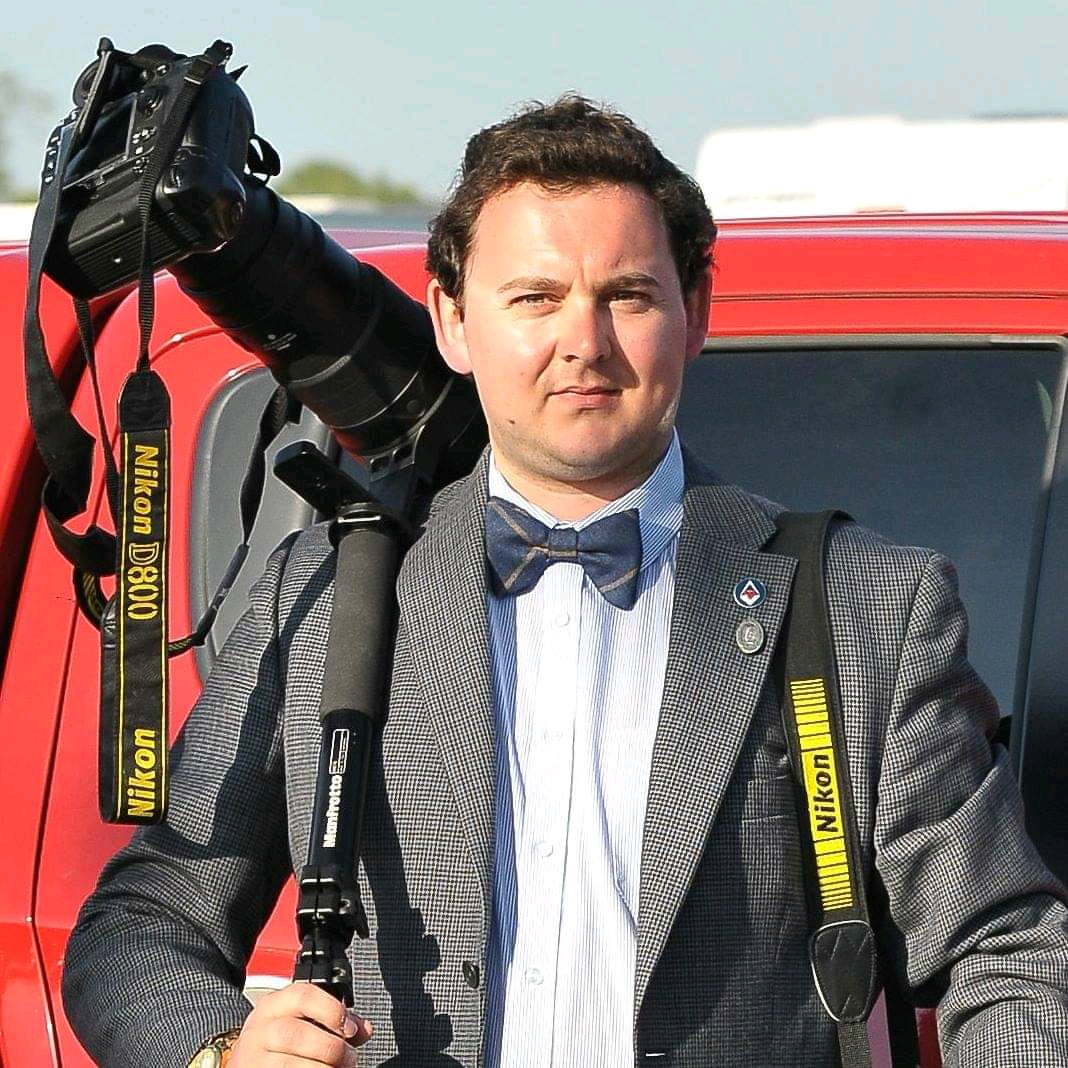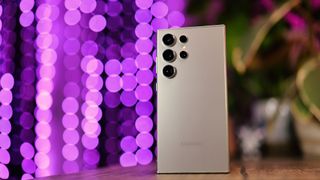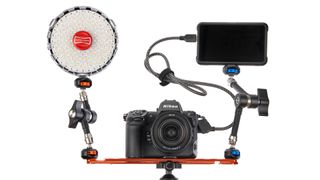
Quick list
1. Best binoculars overall
2. Best stabilized binoculars
3. Best value binoculars
4. Best all-round binoculars
5. Best for optical quality
6. Best high magnification
7. Best for bird watching
8. Best for astronomy
9. Best for sailing
10. Best cheap binoculars
How to choose
How we test
Binoculars are a great item to have in one's bag if you’re scoping out wildlife for your next great shot, enjoy birdwatching, or love to go sightseeing or star gazing.
With all that time spent using them, I know just what you need to look for when picking out a product. In order to get the best pair for you, you’ll need to know what you want to use them for, how much weight you are willing to carry around with you, and your budget.
Depending on your brand preference and requirements binoculars can be pretty expensive, but the good news is you really don’t have to spend a fortune to get a pair that's right for you. My favorite overall pick is the Celestron Nature DX ED 12x50.
For the ultimate long-distance viewing, I'd recommend the Canon's 10x42L IS WP which has built-in image stabilization to keep your far-reaching views smooth and steady, if you're just starting out in bird watching or need something simple to keep in your car The I would highly recommend the Nikon Prostaff P3 8x42 - which I rated as the best entry-level binocular in our guide.
When narrowing down our list of the best binoculars, I looked for those that had good magnification, could keep images bright and steady, and had great light-gathering power, without being too expensive. Below I've listed the best binoculars available, so scroll down to find the best binoculars for your requirements.
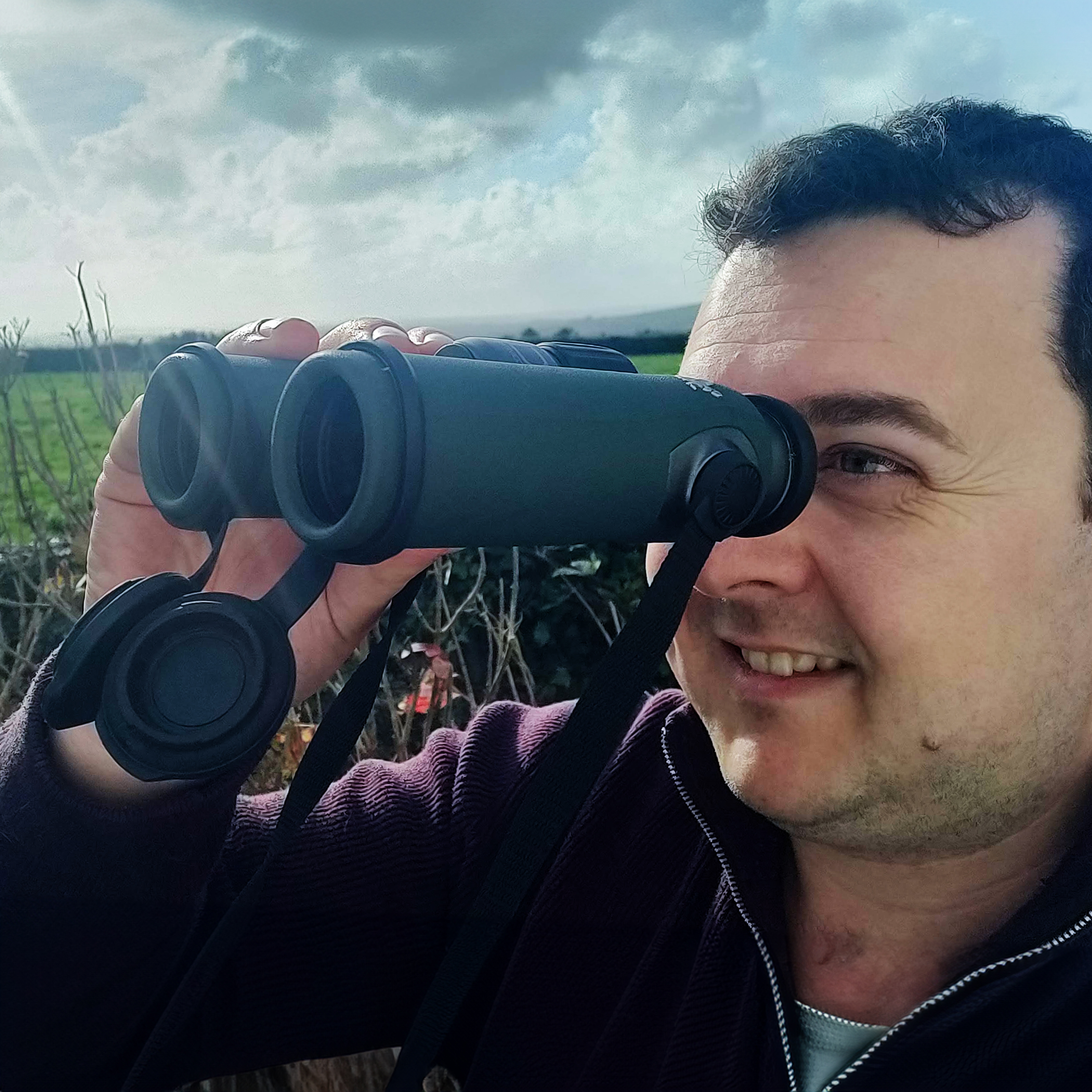
For nearly two decades Sebastian's work has been published internationally. Originally specializing in Equestrianism, his photos have been used The Fédération Equestre Internationale (FEI), The Jockey Club, Horse & Hound, and many more.
As well as being a pro sports photographer he is also a big country sportsman who can be often found in or around the shooting field, sailing on the open sea, or taking part in other country pursuits, and quite often has either a pair of binoculars, a monocular or a scope in his hand.
Best binoculars: Quick List
In a hurry? Here's a quick overview of the binoculars in this guide, with links that let you jump down the page directly to a review of whichever ones catches your eye…
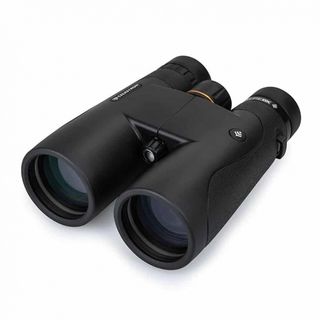
The ability to get a close focus on nearby objects as well as a reasonably wide field of view makes the Celestron Nature DX ED 12x50 binoculars useful for a wide range of outdoor uses.
Read more below
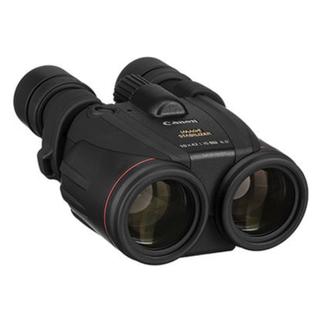
This battery-operated option enables you to get wobble-free images of far-reaching views by just pressing a button on the binoculars – and the stabilizing effect is both instant and jaw-dropping.
Read more below
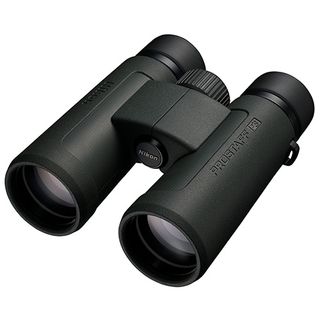
The Prostaff P3 binoculars are a great entry-level product that really impressed me when reviewing. Nikon has saved on manufacturing costs where it counts, but offers a good magnification for beginners.
Read more below
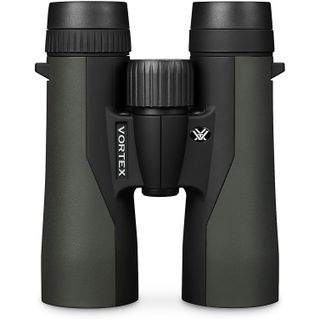
These are a great option if can't decide between buying binoculars primarily for wildlife or astronomy.
Read more below
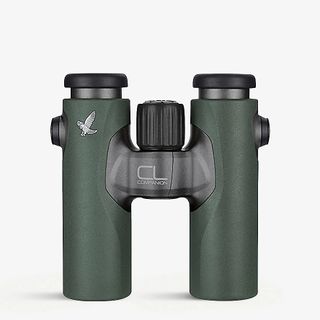
If image and build quality are your number one top priorities, I think these premium compact binoculars are the best you can get.
Read more below
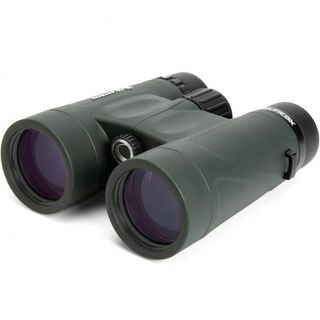
If you want the best bang for your buck I'd pick these, they are a great pair of binoculars to help you out in any situation.
Read more below
The best binoculars in 2024
Why you can trust Digital Camera World
Best overall binoculars
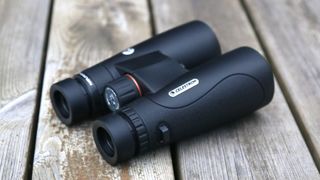
The ability to get a close focus on nearby objects as well as a reasonably wide field of view makes the Celestron Nature DX ED 12x50 binoculars useful for a wide range of outdoor uses, as does the tough build quality and the ED glass, which gives excellent images in our review, which were bright, colorful and sharp.
If you're after a mid-range pair of large binoculars ideal for wildlife viewing, I think the Celestron Nature DX ED 12x50 fits the bill perfectly.
Read our full Celestron Nature DX ED 12x50 review for more details
Best stabilized binoculars
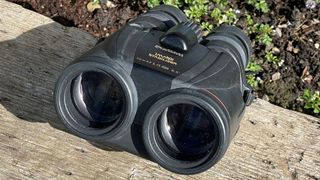
All of Canon’s current range of binos have the ‘IS’ suffix in their model name to denote the fact they’re image-stabilized binoculars. This battery-operated option enables you to get a wobble-free image by just pressing a button on the binoculars – and the stabilizing effect is instant and jaw-dropping when you see it in person. Crucially, you just use the image stabilization when you need it - and you can still use the binoculars even if the battery runs flat.
From the broad range of Canon IS options available, I picked the rubber-coated Canon 10x42L IS WP model as the best. As the WP in the name suggests, they’re also waterproof, so ideal for an even broader range of long-distance pursuits. Plus, Canon’s ‘L’ series is its premium lineup, providing a super steady view in the most adverse of conditions.
As well as rock-solid stability, these porro prism binoculars sat very comfortably in my hand and sport a comfortably long (at 16mm) eye relief..
Read our full Canon 10x42L IS WP binoculars review for more details
Best value binoculars
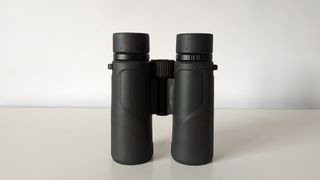
The Prostaff P3 binoculars are a great entry-level viewing instrument that I was impressed with when reviewing. Nikon has saved on manufacturing costs where it counts, mainly in the accessories that these binoculars ship with, but has retained the high-quality optics that I expect to see in a Nikon product but at a great price.
If you decide to grab these, even if they’re not on sale, I'm confident you’ll feel pleased with the results. But I'd probably swap out the neck strap and lens covers if I was going to upgrade these over time. Overall though, any beginner or enthusiast who wants to birdwatch, spot wildlife, or view vehicles and air shows will find them a fantastic observation instrument that delivers in a wide range of lighting conditions.
Read our full Nikon Prostaff P3 8x42 binocular review for more details
Best all round binoculars
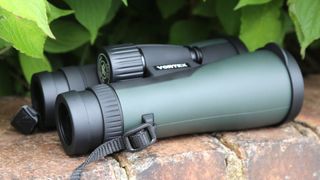
If you can't decide between buying binoculars primarily for wildlife or astronomy then you only have one decision to make. Perfect for both day and night activities, 10x42 or 10x50 binoculars are the best options for most people, though the Vortex Crossfire HD 10x50s we have here are a definite step-up product that has the big benefit as it comes with a bespoke chest harness for extra comfort and quick deployment.
With the excellent build quality and superb optics, I think the Vortex Crossfire HD 10x50 should be candidate binoculars for anyone looking for a step-up option to use for many years in all kinds of scenarios, from wildlife to sport to astronomy.
Read our full Vortex Crossfire HD 10x50 review for more details
Best for optical quality
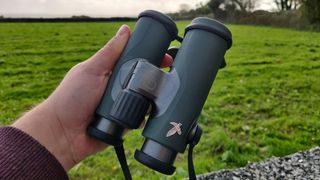
If price isn't a concern and you just want the best optical quality on the market to date, then this pair of Swarovski CL Companion 10x30 compact binoculars are just the thing to let you observe wildlife from as close to 3 meters all the way up to 132 meters – with crystal clear vision - I thought they were fantastic!
If you're looking for the best optical quality binoculars that are also lightweight for carrying long distances, and that let you see your observations from a far distance, these are possibly the best compact binoculars you can buy, and I've tested a few!
With the lightweight construction of the CL Companion binoculars and the impeccable build quality, you can be sure your investment will withstand the test of time, which is what you would hope as these are far from cheap. But I say you get what you pay for and the optical quality of these binoculars is possibly the best on the market.
Read our full Swarovski CL Companion 10x30 review for more details
Best high-magnification binoculars
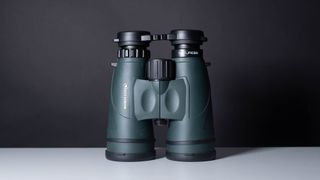
A sweet spot for binoculars, the Celestron Nature DX 12x56 pack a heck of a lot of optics into a tidy, affordable package. A close minimum focusing distance and the huge 12x magnification make them ideal beginner wildlife binoculars and their 56mm objective lenses even offer some nighttime views (especially of the moon) an attractive opportunity.
Are they the sharpest? No. Do they have no color fringing? No. But are they one of the best binoculars you can buy for the price? Wholeheartedly, yes I think so. Just big enough to zoom in on far-away subjects without becoming cumbersome, the DX 12x56 is the model of the line-up to get.
Read our full Celestron Nature DX 12x56 review for more details
Best binoculars for bird-watching
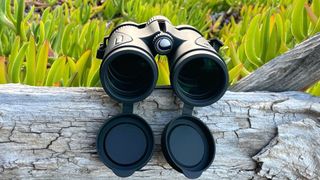
Offering the perfect balance between portability, durability, and image quality, the Celestron TrailSeeker 8x42 manages to straddle the divide between affordability and quality. You can spend thousands on a good pair of binoculars for bird-watching - but this pair is a great place to start. They offer good views across the board, with the optical highlight including a wide field of view and a close focus.
We were also impressed by the extras in the box, particularly a harness housed in a small stuff sack. If you are walking with your binos, the binocular harness ensures the binoculars don't bashing you with your every stride. If you’re after a step-up pair of full-size binoculars with a slice of quality then the Celestron TrailSeeker 8x42 is a great candidate for wildlife watching.
Read our full Celestron TrailSeeker 8x42 binocular review for more details
Best for astronomy
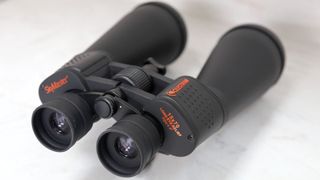
Binoculars are a great alternative to a traditional telescope for observing the night sky - as long as they have enough magnification. These incredibly well-priced Celestron binos have a huge 15x magnification which can help you to observe galaxies, planets, and lunar details.
In my tests, you can just about handhold them, but they are much better used with a tripod - and very conveniently they provide you with a binocular tripod adaptor that simplifies attaching them to three-legged support.
Read our full Celestron Skymaster 15x70 review for more details
Best for sailing
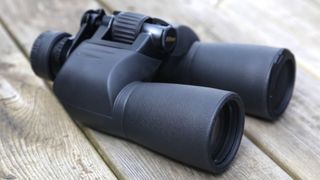
The Nikon Action EX 12x50 is a great value combination of high power and light-gathering whilst you're on the ocean either fishing or sailing. If you want to get even closer to objects then look for binoculars with 16x magnification – and prepare to always use a tripod – but I think 12x is a worthy upgrade from 10x binoculars without hugely adding to the weight.
Yes, the Nikon Action EX 12x50 is heavy, but the extra power they offer (and for very little extra outlay) alongside their rugged design and clean crisp, and colorful images make them a great option while sailing the open ocean for observing your objective.
Read our full Nikon Action EX 12x50 review for more details
Best cheap binoculars
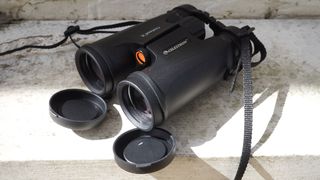
Something of a bargain, this pair of Celestron BaK-4 prism binoculars boasts 8x magnification and multi-coated optics to keep your view as clear as possible. This isn't the only size available – you can get these Outland X binoculars in other magnifications and sizes too. They're suitable for outdoor use by birders and wildlife watchers, thanks not only to said magnification but also to a sturdy polycarbonate build and waterproofing.
The decent-sized 42mm objective lenses on offer here gather a lot of light, making these binoculars suitable for use in dim conditions as well as in regular daylight. A large smooth-feel focus wheel aids operation and a long 18mm eye relief delivers viewing comfort. Capable of being tripod mounted if desired, a strap, lens cloth and carry case come as standard, plus a limited lifetime warranty.
Read our full Celestron Outland X 8x42 review for more details
How to choose
What do the numbers, such as 8x42 and 12x50, mean on binoculars?
Binoculars have lots of different specs, but two key ones are best to focus on if you want to keep things simple. These are magnification and lens size.
Most binoculars will list both in their name. When you're browsing for binoculars, you'll quickly notice that their names tend to include something like "10x20" or "6x30". These two numbers refer respectively to the magnification factor and the size of the lenses. So in this example, we've got binoculars with 10x magnification and 6x magnification. You might think it'd be a matter of picking the binoculars with the largest magnification, but in practicality, it limits your field of view, which can make things harder to spot or follow. With higher magnifications, you are more likely to need a tripod or built-in image stabilization.
The second number refers to the objective lens size. A larger lens will make the image brighter and clearer, especially in low light, but will also make the binoculars bigger and heavier (and probably more expensive). This means that for your hobby or subject, it's worth thinking about what the best combination of magnification of objective lens size will work for you.
To work out how bright a pair of binoculars is - and its suitability for use in lowlight – you need to divide the second number by the first - this gives you what is the "exit pupil size". For a pair of 10x20 binoculars, the exit pupil is 2 – and for a pair of 6x30 binos it is 5. Look for an exit pupil of five or greater if you want to use them on dull days, or at dusk.
What are the best binoculars?
If price isn't a concern and you just want the best optical quality on the market to date, then this pair of Swarovski CL Companion 8x30 compact binoculars are just the thing to let you observe wildlife from as close to 3 meters all the way up to 132 meters – with crystal clear vision.
Best binoculars for beginners?
The Nikon Prostaff P3 binoculars are entry-level and we were impressed when reviewing them. Nikon has saved on manufacturing costs where it counts, mainly in the accessories that these binoculars ship with, but has retained the high-quality optics that I expect to see in a Nikon product.
How we test
The best binoculars are all field-tested for their image quality, portability, robustness, and suitability for specific tasks, such as astrophotography, sports, wildlife, and marine use.
Optical quality is tested in all weather conditions, on a sunny day we look for clarity in the optics and sharpness of the images produced, along with image fringing. On an overcast day, we check for lens brightness and eye relief. We also check construction and weather resistance by testing binoculars in the toughest conditions to make sure you're getting the best advice possible.
Check out our specialist binocular guides:
Best marine binoculars
Best compact binoculars
Best binoculars for kids
Best thermal-imaging binoculars
